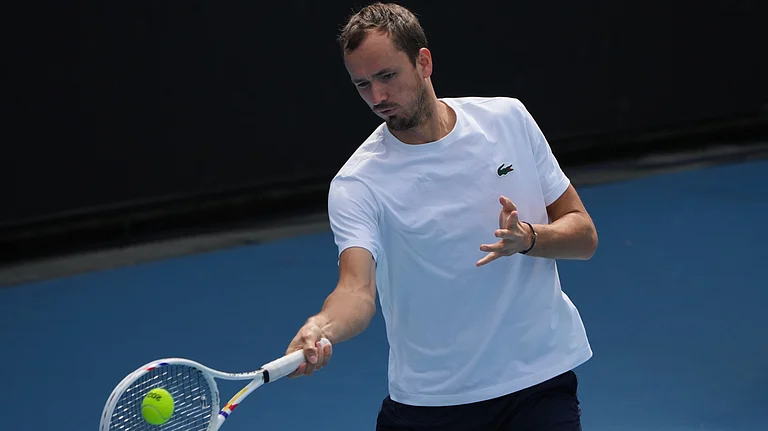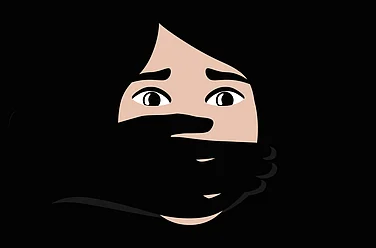A group of men and women in yellow T-shirts and saris accompanied Gopal Italia, the Gujarat unit chief of the Aam Aadmi Party (AAP), as he went from door to door in Tribhuvan Nagar of Surat. The former police officer and leader of the Patidar movement sought votes from the residents of the influential “Diamond Constituency” of Katargam, renowned for trade in the precious stone, while promising jobs and free electricity. People of the state want ‘parivartan’ (change), he said, and the AAP was here to deliver it.
Watching the procession from a tea stall nearby, Vishal Patil, a resident of the area and supporter of the Bharatiya Janata Party (BJP), laughs off the possibility of any change. “The people of Gujarat know whom to vote for already,” he says.
But AAP’s campaign has impressed him well. “They have managed to be seen,” he says, adding that the citizens of the state are watching this election very closely.
The BJP has been in power in the state uninterrupted since 1998, with Prime Minister Narendra Modi serving nearly 13 years as chief minister from 2001 to 2014. The AAP has emerged as an important challenger in this election to the state Assembly that will be held over two phases—on December 1 and on December 5. The results will be declared on December 8.
Promises and plans
Despite the communal riots of 2002, intra-party rebellion and anti-incumbency, the BJP seems to enjoy a comfortable majority in the state. The AAP has, however, made an impression with its gold-and-blue flags and jhaadu (broom) election symbol—from the southern edges of tribal-dominated Dang to the industrial centres of Surat in south Gujarat, from the hilly villages of Narmada to the urban constituencies of Deesa and Viramgam in north Gujarat. Residents and analysts claim that the results of this election could as well influence the Lok Sabha elections in 2024. “There is anti-incumbency and a lot of anger against the BJP,” says Yogesh Jadhvani, AAP’s spokesperson in Gujarat. “People kept voting for them because the Congress was not a viable alternative. The AAP will fix that problem.”
Conservative estimates put the party at number three after the BJP and the Congress. However, analysts that Outlook spoke to claim that the AAP could get as much as 12 percent of the votes. This is significant because the party’s national convener and Delhi Chief Minister Arvind Kejriwal has been trying to project it as a national challenger to the BJP. The results of the election are likely to play a definitive role in shaping the political future of Gujarat in 2027.
“I feel the AAP will get a considerable vote share and even some key seats in Surat and south Gujarat,” says Surat-based political analyst Naresh Variya. “A few signs of change have been evident since last year when the party won the elections to the city’s municipality. The party has been building support on the ground through its cadres and has broken into the BJP’s traditional stronghold constituencies such as the urban youth.”

In its election manifesto, the APP has promised Rs 3,000 per month as unemployment benefit, job guarantees, Rs 1,000 per month to women and free electricity. But beyond the schemes it has successfully implemented in Delhi and Punjab, the AAP has also tried to work out a caste equation that can help it ride to power. Its strategy is being called OTP—Other Backward Classes (OBCs), tribals and Patels.
Sources, however, said that this might eat into the vote base of the Congress instead of afecting the BJP. This could, in turn, benefit the ruling party by splitting opposition votes.
Patidar–Prajapati rivalry
In Surat, where the AAP is the strongest, it is relying on the affluent and landed Patidar community to defeat the BJP and the Congress. Italia is contesting the Katargam seat, which has a majority of Patidar votes. Other leaders of Patidar Anamat Andolan Samiti, which had spearheaded the movement for recognition of the community under the OBC category, such as Alpesh Kathiriya, Dharmik Malaviya and Ram Dhaduk, have also been fielded from key seats in Surat.
“The AAP’s poll strategy seems well studied,” says Variya. “Their candidates are a good mix of Patidars, OBCs and Patels in urban centres, where it matters the most.” He adds that while the Patidar vote is important, OBC communities such as Prajapatis could turn out to be the real kingmakers.
"Urbanisation has not ended the caste system in Gujarat and parties continue to select candidates on basis of caste,” adds Variya. In the 2012 and 2017 elections, the OBC vote had played a key role in ensuring victory to the BJP. In 2017, when the Patidar agitation was in full swing, Vinod Moradiya of the BJP won the Katargam seat with a margin of nearly 80,000 votes. This time, the BJP is also wooing Patidars by giving tickets to the leaders of the community like Hardik Patel, who was earlier with the Congress. Patel is contesting the Viramgam seat. The OBC votes could swing between Congress and the AAP.
Within the OBC communities, the Prajapatis are key. However, the BJP has not fielded anyone from the community. “This has led to considerable anger against the ruling party,” says Variya. The Congress is the only party with a prominent Prajapati candidate, Kalpesh Variya.
The AAP’s chief ministerial candidate Isudan Gadhvi, who hails from an OBC community, is likely to attract voters. He was chosen by the party after conducting a state-wide poll. “The people of Gujarat have spoken,” Italia tells Outlook. “They have let us know who they want to see as the face of the state.”
Gadhvi, however, might face stiff competition in his own constituency, Khambhalia, in Devbhumi Dwarka district. He will be facing the BJP’s Mulu Ayar Bera and the Congress’s Vikram Madan, who is also a sitting MLA. Both are from the Ahir community and have considerable influence in the area.
The ‘blue lotus’
Beyond the OTP formula, the AAP’s strategy seems to be following the BJP’s footsteps—wooing the Hindu Economically Weaker Sections (EWS) in urban pockets. The party is promising government jobs and revocation of fixed pay scales for employees.
Ahmedabad-based journalist and political commentator Deepal Trivedi, who runs the independent news portal Vibes of India, says the AAP has taken up many of the same issues that the BJP once fought for and consolidated them into an anti-BJP agenda.
“The AAP speaks about jobs, an end to the fixed pay system. These are the very issues that the BJP had taken up in the early 1990s, but did not work on them,” she says. There has hardly been any recruitment for government jobs in the past ten years. Those who were hired were on a fixed-pay scale. “The AAP raised the issue of a fixed-pay contract system for government employees, increasing the pay grade for the police, and about the low compensation given to the families of those in the defence services. The BJP government also responded to these issues. In this sense, the AAP can be credited with setting the agenda for this election.” Trivedi says its performance will provide a blueprint for its future vote base.
In tribal and rural areas, the AAP is banking on the promise of implementing self-governance, job guarantees, cash benefits and free education to woo the youth from tribal communities as well as working-class areas. Several influential leaders of the Bhartiya Tribal Party, which holds considerable sway over Narmada district, have been given tickets by the AAP. Some of them, such as Chaitar Vasava, are expected to perform well.
Most of the voters in Gujarat are Hindu. The 2011 Census identifies 88.57 per cent of the population as Hindu. Wooing them is essential for any party that wants to make it to the state Assembly. The AAP has been promoting the pilgrimage to Ayodhya, while remaining silent on the controversial Bilkis Bano case. The Congress has included the latter in its manifesto.
Bano was raped and her family was killed during the 2002 riots. However, earlier this year, those convicted of the crimes were released from prison, leading to a controversy. The Congress has promised to send them all back to prison. But a senior AAP leader, when asked about it, tells Outlook that the party will respond after the elections. “It shows political tact on their part,” says Trivedi. “To outsiders, it may seem like a ruthless move, but to win an election in a state like Gujarat, the AAP knows it has to stay on the good side of the majority.”
While comments by BJP leaders, such as Union Home Minister Amit Shah on the 2002 riots or Assam Chief Minister Hemanta Biswa Sarma on love jihad, have also led to controversies, the AAP has kept a studied silence on the issue. This has left many Muslims—9.67 per cent of the state’s population, according to the 2011 Census—disillusioned with the party. Amjad, an unemployed young man and resident of Ahwa in Dang district, tells Outlook that he will vote for the BJP since there is no party representing Muslim interests in his area. An Adivasi, he saw Christians in the area aligning with it. The BJP has given a ticket to a Christian leader in the region.
“Why will minorities vote for a ‘blue lotus’ (AAP) if they can vote for the ‘saffron lotus’ (BJP)?” says Trivedi. The jury is out on whether the voters will choose the AAP or the BJP.
(This appeared in the print edition as "The Jury Is Out")
Rakhi Bose in Surat


























